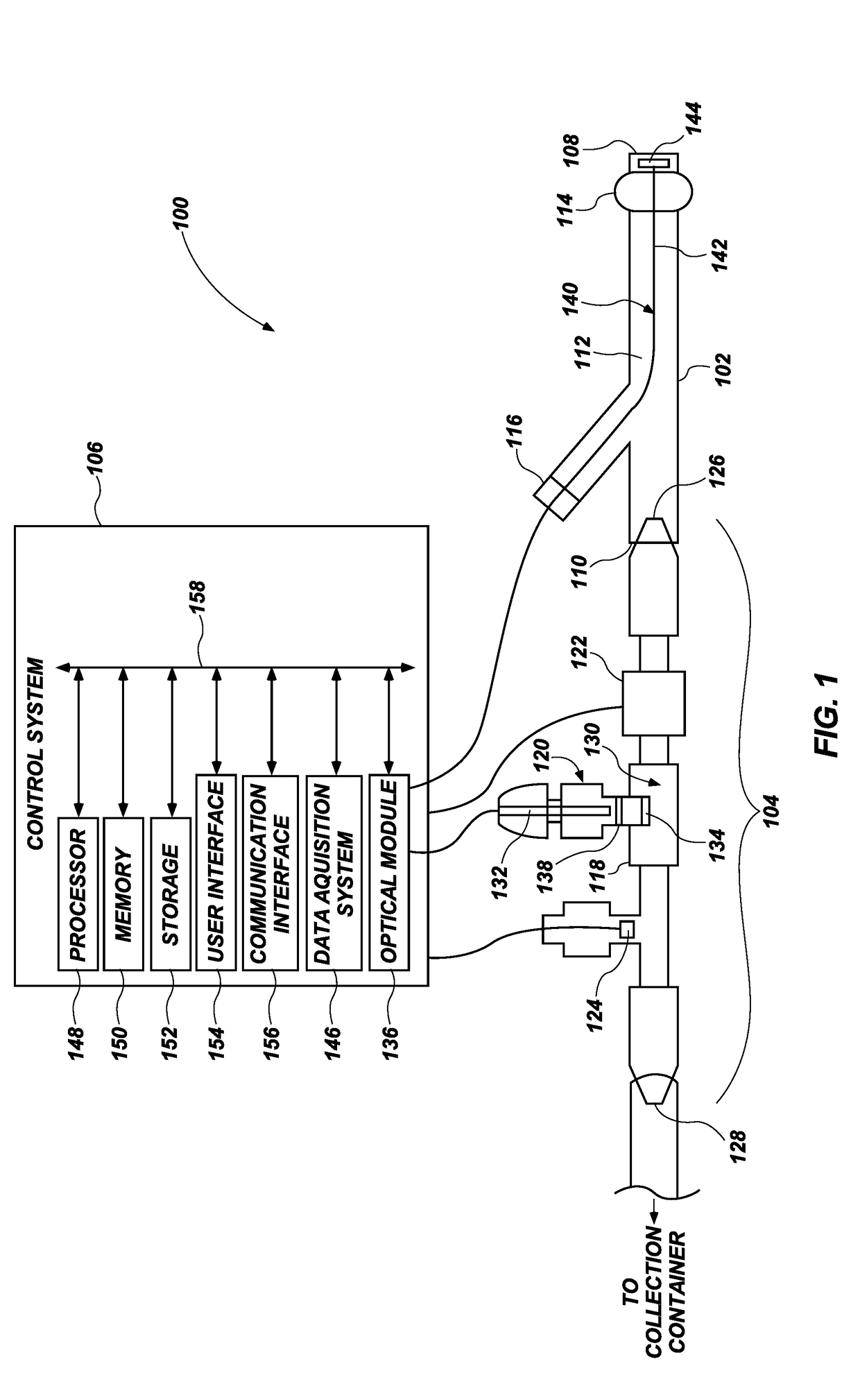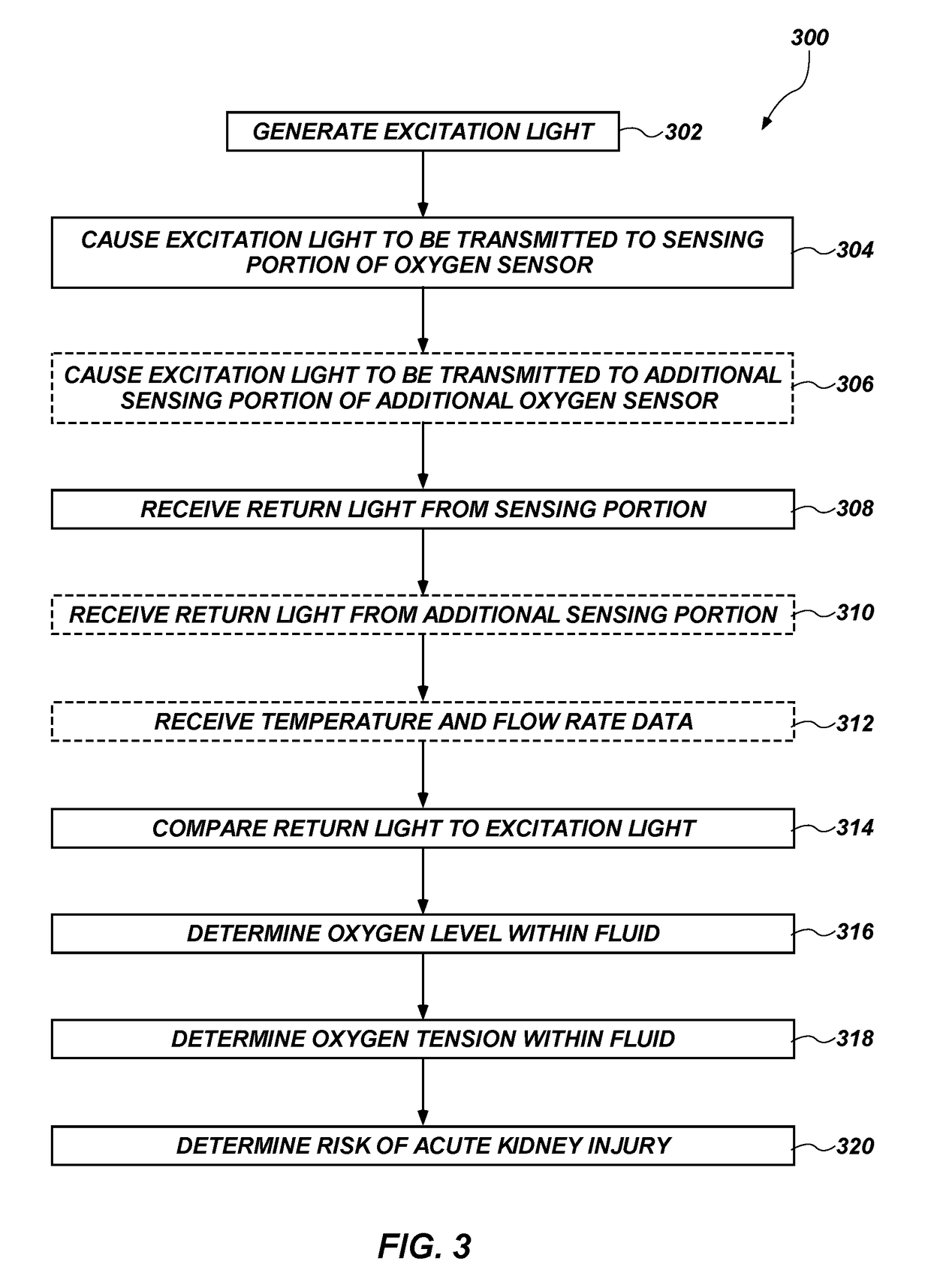Catheter assemblies, oxygen-sensing assemblies, and related methods
a technology of urinary catheters and oxygen sensors, applied in the field of catheters, can solve the problems of increased mortality, prolonged hospital stays, prolonged intensive care units, etc., and achieve the effect of reducing the time between an actual injury and diagnosis, and reducing the risk of aki
- Summary
- Abstract
- Description
- Claims
- Application Information
AI Technical Summary
Benefits of technology
Problems solved by technology
Method used
Image
Examples
embodiment 1
[0081] A catheter assembly, comprising: a urinary catheter comprising at least one lumen extending between an inlet end and an outlet end; an oxygen-sensing assembly in fluid communication with the urinary catheter, the oxygen-sensing assembly comprising: a housing having flow pathway extending between an inlet end and an outlet end thereof, wherein the inlet end of the housing is attachable to the outlet end of the urinary catheter; an oxygen sensor in operable communication with the flow pathway of the housing, the oxygen sensor configured to detect oxygen levels of a fluid flowing through the flow pathway; a flowrate sensor disposed between the oxygen sensor and the inlet end of the housing and configured to detect a flowrate of the fluid flowing through the flow pathway; and a temperature sensor disposed downstream of the oxygen sensor and configured to detect a temperature of the fluid flowing through the flow pathway; and a control system operably coupled to the oxygen sensor,...
embodiment 11
[0091] An oxygen-sensing assembly for attachment to a urinary catheter, the oxygen-sensing assembly comprising: a housing having a flow pathway extending between an inlet end and an outlet end thereof; and an oxygen sensor in operable communication with the flow pathway of the housing, the oxygen sensor configured to detect oxygen levels of a fluid flowing through the flow pathway.
[0092]Embodiment 12: The oxygen-sensing assembly of embodiment 11, wherein the oxygen sensor comprises a fiber-optic sensor.
[0093]Embodiment 13: The oxygen-sensing assembly of embodiments 11 and 12, wherein the oxygen sensor comprises a Fiber Bragg grating sensor.
[0094]Embodiment 14: The oxygen-sensing assembly of embodiment 11, further comprising: a flowrate sensor disposed between the oxygen sensor and the inlet end of the housing and configured to detect a flowrate of the fluid flowing through the flow pathway; and a temperature sensor disposed downstream of the oxygen sensor and configured to detect a ...
embodiment 20
[0100] A method, comprising: attaching an oxygen-sensing assembly to a urinary catheter; disposing the urinary catheter within a bladder of a subject; detecting oxygen levels of a fluid flowing through the urinary catheter and through a flow pathway of a housing of the oxygen-sensing assembly with an oxygen sensor; detecting a flowrate of the fluid flowing through the flow pathway with a flowrate sensor; detecting a temperature of the fluid flowing through the flow pathway with a temperature sensor; and based at least partially on one or more of the detected oxygen levels and the detected temperature of the fluid, determining a measurement of an oxygen tension of the fluid flowing through the flow pathway.
[0101]Embodiment 21: The method of embodiment 20, further comprising positioning an additional oxygen sensor within a lumen of the urinary catheter.
[0102]Embodiment 22: The method of embodiments 20 and 21, wherein detecting a level of oxygen tension of a fluid further comprises: tr...
PUM
 Login to View More
Login to View More Abstract
Description
Claims
Application Information
 Login to View More
Login to View More - R&D
- Intellectual Property
- Life Sciences
- Materials
- Tech Scout
- Unparalleled Data Quality
- Higher Quality Content
- 60% Fewer Hallucinations
Browse by: Latest US Patents, China's latest patents, Technical Efficacy Thesaurus, Application Domain, Technology Topic, Popular Technical Reports.
© 2025 PatSnap. All rights reserved.Legal|Privacy policy|Modern Slavery Act Transparency Statement|Sitemap|About US| Contact US: help@patsnap.com



